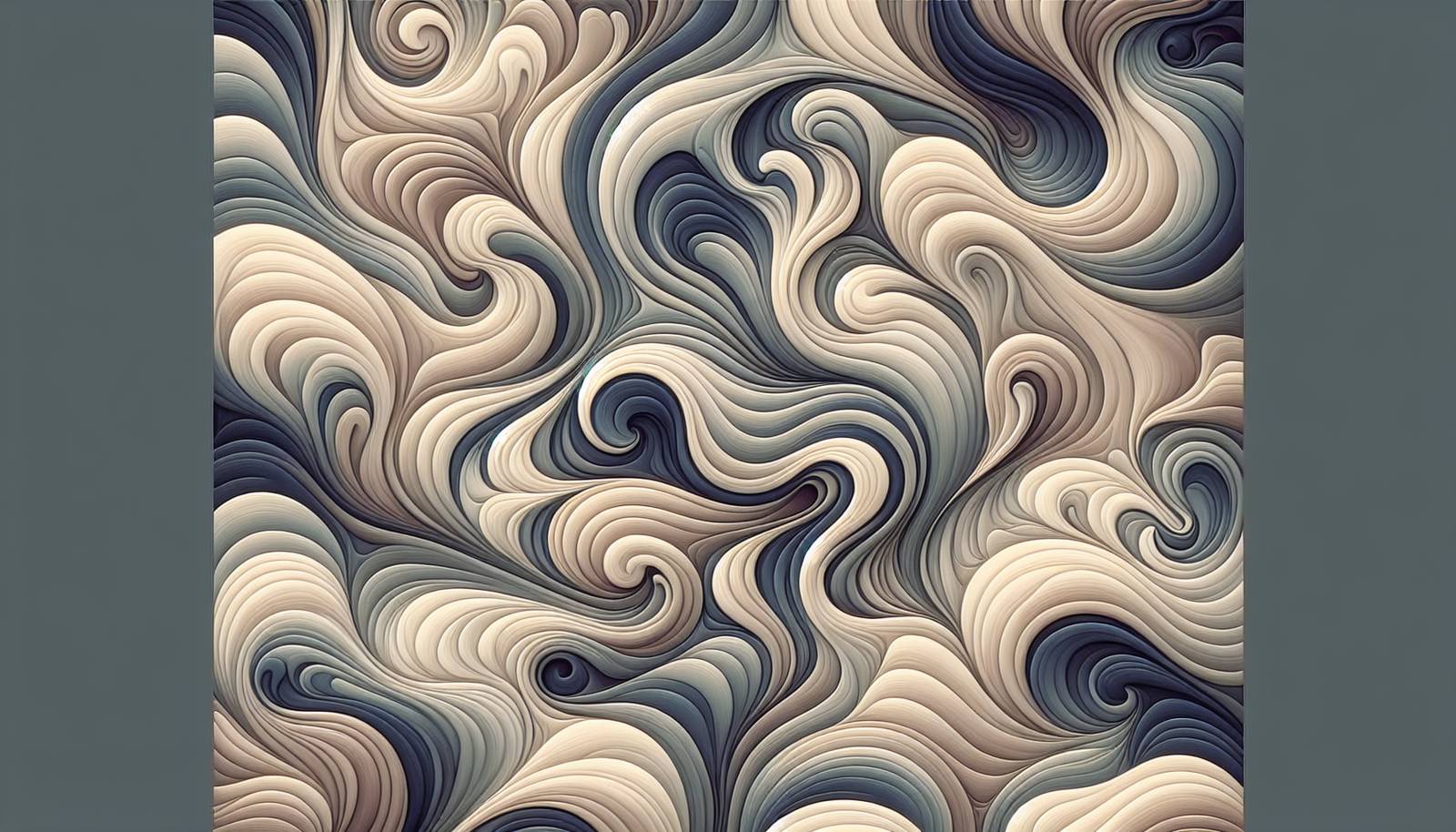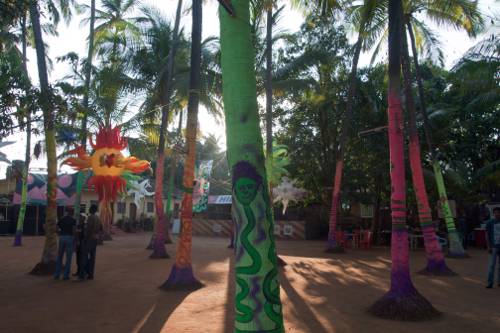
FAQ About The Role of Liquid Light Shows in Psychedelic Art

What are liquid light shows?
Liquid light shows are a form of visual art that became popular in the 1960s, primarily associated with psychedelic concerts and music events. They involve the use of colored oils, slides, and various lighting effects projected onto screens or walls, often synchronized with live music to create an immersive experience.

How do liquid light shows work?
Liquid light shows work by projecting illuminated images created using liquid materials, such as colored oils and water, onto a canvas or screen. These liquids are manipulated manually by the artists by swirling or adding layers, and the projections often change dynamically with the music. This creates a constantly evolving, colorful backdrop that enhances the sensory experience of the audience.

Who were some notable practitioners of liquid light shows?
Notable practitioners of liquid light shows include artists and collectives like the Joshua Light Show, Brotherhood of Light, and Joe's Lights. These groups were known for collaborating with famous musicians such as Jimi Hendrix, The Grateful Dead, and Jefferson Airplane during their performances, greatly enhancing the psychedelic vibe and overall audience experience.

What role did liquid light shows play in the psychedelic art movement of the 1960s?
Liquid light shows played a critical role in the 1960s psychedelic art movement by complementing the experimental music and culture of the time. They provided a visual representation of the psychedelic experience, characterized by vivid colors and fluid, dreamlike imagery that resonated with the themes of exploration, consciousness, and counterculture. The shows contributed to the immersive and multisensory nature of live music events.

How were liquid light shows synchronized with music?
Liquid light shows were often synchronized with music through live manipulation of the visual elements in response to the rhythm and mood of the performance. Artists would adjust the colors, shapes, and movements of the liquids in real-time to align with the ebb and flow of the music, enhancing the audience's overall sensory experience.

Why were liquid light shows significant in live music presentations during the 1960s?
They were significant because they transformed music concerts into multi-sensory events, offering audiences a novel experience combining sound and sight. By creating an immersive environment, these presentations helped express the ethos of the psychedelic era, which emphasized freedom, experimentation, and a break from conventional artistic norms.

Are liquid light shows still popular today?
While not as prevalent as they were in the 1960s, liquid light shows have seen a resurgence in some live music settings, such as festivals and concerts that celebrate retro or psychedelic culture. Modern artists sometimes incorporate digital elements to emulate the classic style, attracting audiences interested in the nostalgic and artistic aspects of this form of visual art.

How did liquid light shows influence other forms of digital art?
Liquid light shows influenced modern digital art by inspiring techniques that focus on interactivity and real-time manipulation of visuals. The dynamic nature of the shows laid the groundwork for today's live visual effects in concerts and installations, where synchronization with music and audience interaction are key components.

What equipment was typically used in a liquid light show?
The equipment for a liquid light show typically included overhead projectors, colored oil and water mixtures, glass dishes, slides, and colored gels. Artists would manually manipulate the liquids and slides, projecting the changing visuals onto large screens or walls to create dynamic, psychedelic effects.

Can anyone perform a liquid light show?
While the basic concept of a liquid light show is relatively simple, performing a compelling show requires creativity, a good sense of timing, and an understanding of music synchronization. Experimenting with different liquids, colors, and projection techniques can help create more engaging and visually appealing performances.

What is the historical significance of liquid light shows?
The historical significance of liquid light shows lies in their embodiment of the 1960s counterculture and their role in pioneering multimedia art. They symbolized the era's spirit of experimentation and boundary-pushing in art and music, influencing how audiovisual experiences were perceived and created in the subsequent decades.

How did audiences in the 1960s react to liquid light shows?
Audiences in the 1960s found liquid light shows to be captivating and mesmerizing. The blend of vibrant visuals and music offered a profound sensory experience, often enhancing the psychedelic effect sought after at concerts, which was conducive to the era's explorative and open-minded cultural trends.

What are some modern adaptations of liquid light shows?
Modern adaptations of liquid light shows often involve digital technology, allowing for more precise control and synchronization with music. These adaptations can include video projections, computer-generated imagery, and interactive LED screens, maintaining the essence of traditional shows but with enhanced capabilities and effects.

Why are liquid light shows considered a form of psychedelic art?
Liquid light shows are considered a form of psychedelic art due to their vibrant, fluid imagery and their role in evoking states of altered perception, much like the effects of psychedelic substances. The art form encapsulates the exploration of consciousness and sensory experiences, which are central themes in psychedelic culture.

What materials are used in liquid light shows?
Common materials used in liquid light shows include colored oils, water, glycerin, dyes, and sometimes inks or pigments. These materials are combined and manipulated within clear slides or petri dishes, with light projected through them to create dynamic, colorful images on larger surfaces.

How have liquid light shows impacted visual culture?
The impact of liquid light shows on visual culture is seen in the blending of art and technology, inspiring future developments in multimedia presentations. Their influence persists in modern concerts, art installations, and video production, contributing to the evolution of how visual experiences complement music and art.

Did liquid light shows influence the music industry of the 1960s?
Yes, liquid light shows had a significant influence on the music industry in the 1960s. They helped redefine live performances by turning concerts into full sensory experiences, encouraging bands and venues to explore and incorporate elaborate visual elements, thus enriching the overall appeal and engagement of live performances.

What challenges do artists face when creating liquid light shows?
Artists face several challenges when creating liquid light shows, such as mastering the timing and synchronization with music, selecting the right materials and colors, and ensuring the technical setup works flawlessly. Additionally, creating a flowing narrative or theme through visuals can be challenging but is crucial for a cohesive presentation.

What is the future of liquid light shows?
The future of liquid light shows may involve a blend of traditional techniques with digital technology, allowing artists to expand creative possibilities while paying homage to the original art form. As interest in retro and nostalgic styles persists, liquid light shows could continue to find audiences in niche markets and experimental art scenes.

How do liquid light shows reflect the cultural sentiments of the 1960s?
Liquid light shows reflected the cultural sentiments of the 1960s by visually embodying the spirit of freedom, exploration, and nonconformity associated with the counterculture movement. The abstract and dynamic visuals paralleled the era's shift towards breaking traditional boundaries and embracing new forms of expression.
